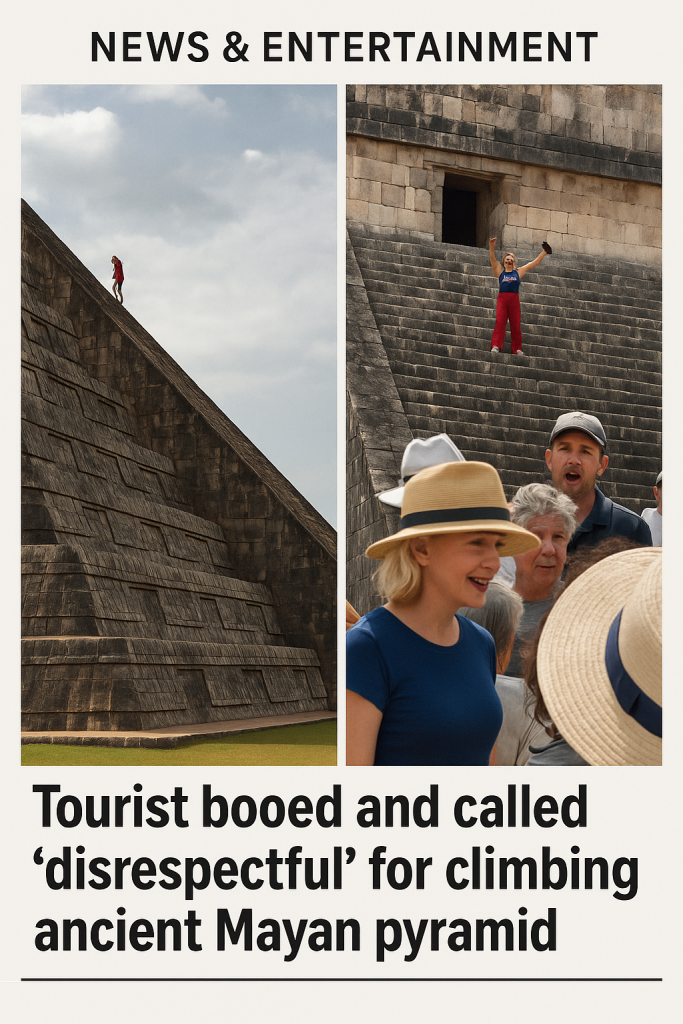A recent incident at a renowned Mayan archaeological site has sparked a wave of controversy and debate about cultural preservation and respectful tourism. A visitor who climbed one of the ancient pyramids was met with loud boos and harsh criticism, with many labeling the act as “disrespectful” and a threat to the preservation of invaluable cultural heritage.
The event took place in early 2024 at one of the most emblematic Mayan ruins located in the Yucatán Peninsula, Mexico. Although many of the region’s sites have strict regulations prohibiting climbing on the structures, some still occasionally attract tourists who ignore these rules, often causing concern among local guides, archaeologists, and fellow travelers.
The Controversy
Witnesses recount that the tourist ignored clear signage and verbal warnings from staff and proceeded to climb the pyramid’s steep steps. Immediately, a crowd of onlookers reacted with boos and verbal reprimands, calling out the tourist for being “disrespectful” and for neglecting the cultural significance of the site. Social media users have since shared videos of the incident, further amplifying the backlash.
Local authorities and cultural experts emphasize that climbing ancient ruins not only poses safety risks but also contributes to the deterioration of structures that have withstood centuries of natural and human impact. Many of these pyramids were built by the Maya civilization over a thousand years ago and are considered sacred monuments reflecting deep historical, spiritual, and cultural value.
Rules and Tourism Impact
In recent years, a growing number of archaeological sites across Mexico have banned climbing to better protect the ruins and ensure future generations can appreciate their historical significance. These restrictions have been reinforced with improved signage, presence of onsite guides, and fines for those who do not comply.
Despite these measures, enforcement can be challenging, especially during peak tourist seasons. Many advocates for indigenous and historical preservation argue that education is key, urging travelers to understand the importance of respecting local customs and laws.
“These pyramids are not just tourist attractions; they are sacred remnants of an advanced civilization,” noted a cultural heritage official. “When visitors climb on them, it shows a lack of respect and endangers the structural integrity of these precious sites.”
Broader Discussions on Responsible Tourism
The incident has sparked broader discussions within travel communities and social media platforms about responsible and ethical tourism. Experts stress that tourists must research and adhere to local guidelines, especially when visiting culturally sensitive locations. Disrespectful behavior, whether intentional or unintended, undermines the efforts of indigenous communities and preservationists working tirelessly to maintain the integrity of these historic environments.
What Visitors Should Know
For travelers planning to visit ancient Mayan ruins, the best practice is to respect all posted rules, avoid climbing on structures, and engage local guides who can provide insightful context and guidance. Many sites offer designated viewing platforms that enable visitors to enjoy panoramic views while preserving the base and sculptures of these fragile pyramids.
As global interest in cultural tourism grows, incidents like this underline the importance of balancing curiosity with respect, ensuring these priceless monuments remain protected for centuries to come.



